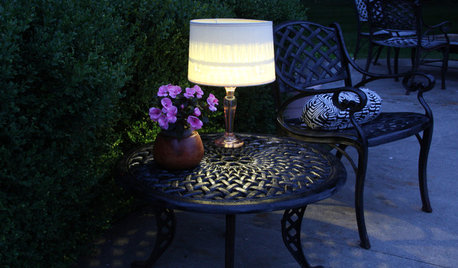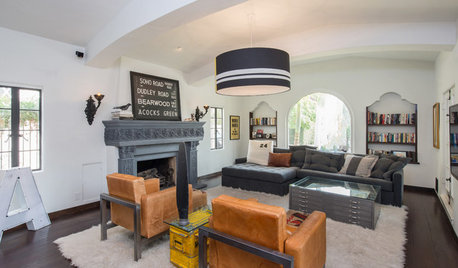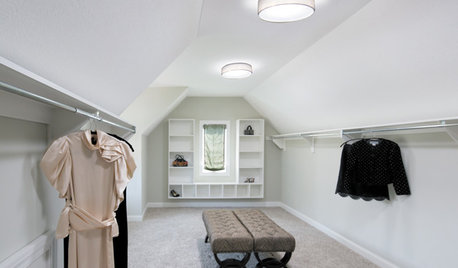Lamps & UV isssues
npthaskell
18 years ago
Related Stories

DIY PROJECTSLight Up Your Night With an Easy Outdoor Table Lamp
Hit up Goodwill and the hardware store to make this lamp for a deck or poolside patio in minutes
Full Story
PRODUCT PICKSGuest Picks: Concrete Ideas for Patios and Decks
Look to lightweight fiber cement for functional outdoor furniture and accessories that are heavy on style
Full Story
DECORATING GUIDESFeel Free to Break Some Decorating Rules
Ditch the dogma about color, style and matching, and watch your rooms come alive
Full Story
LIGHTINGWhat to Know About Switching to LED Lightbulbs
If you’ve been thinking about changing over to LEDs but aren't sure how to do it and which to buy, this story is for you
Full Story
REMODELING GUIDESHow to Get Your Pendant Light Right
Find out where to place a hanging light and how high it should be
Full Story
LIGHTINGDecorating 101: How to Plan Your Home’s Lighting
These designer tricks and tips will help you find the perfect mix of lighting for every room and every mood
Full Story
ECLECTIC HOMESHouzz Tour: Classic Spanish Style Gets a Modern Edge
Rounded curves, modern furniture and vintage ads mingle beautifully in a 1930s Los Angeles home
Full Story
MATERIALSMaterials Workshop: Polycarbonate — a Low-Cost Alternative to Glass
Looking for something lighter, stronger and less expensive than glass? Multiwall polycarbonate may be a good option
Full Story
GREAT HOME PROJECTSHow to Add a Skylight or Light Tube
New project for a new year: Increase daylight and maybe even your home’s energy efficiency by opening a room to the sky
Full Story
LIFEHow Your Landscaping Can Keep Burglars Away
Prevent home break-ins with strategic landscaping and good practices instead of menacing — and maybe less effective — measures
Full StoryMore Discussions






npthaskellOriginal Author
npthaskellOriginal Author
Related Professionals
Waterbury Landscape Contractors · Hampton Bays Landscape Contractors · Setauket-East Setauket Landscape Contractors · West Allis Landscape Contractors · Aliso Viejo Fence Contractors · Collierville Fence Contractors · Ellicott City Fence Contractors · Hayward Fence Contractors · Holbrook Fence Contractors · Lakewood Fence Contractors · Memphis Fence Contractors · Monroe Fence Contractors · Oldsmar Fence Contractors · Park Ridge Fence Contractors · San Leandro Fence ContractorsnpthaskellOriginal Author
shrubs_n_bulbs
npthaskellOriginal Author
npthaskellOriginal Author
shrubs_n_bulbs
dontsleep
npthaskellOriginal Author
npthaskellOriginal Author
npthaskellOriginal Author
npthaskellOriginal Author
shrubs_n_bulbs